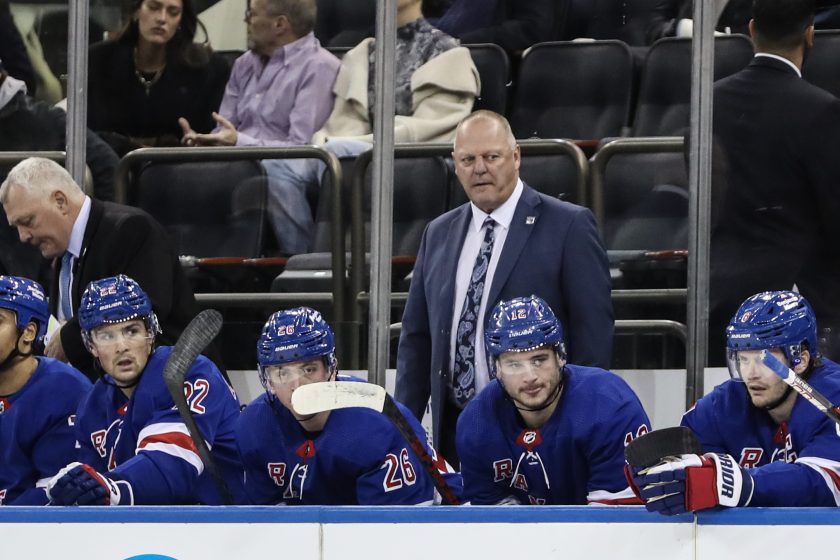Why Are The New York Rangers The Road Team In The 2018 Winter Classic?

The New York Rangers will be appearing in their fourth outdoor game—and second Winter Classic—in January. Why are they never the home team?
The New York Rangers will take on the Buffalo Sabres in the NHL’s 10th annual Winter Classic, set for New Years Day 2018 at Citi Field in Flushing, NY.
2018 Winter Classic: Buffalo Sabres vs. New York Rangers at Citi Field – https://t.co/JOmcmY1B82 https://t.co/s00qSIKGrk
— New York Rangers (@NYRangersTweet) May 11, 2017
Normally, the event would be a home game for the team that plays in (or near) the city that the Classic is played in. But that’s not the case for the Rangers. The Sabres, whose home rink, KeyBank Arena, is nearly 400 miles away, will be the designated home team.
Why, for the third time, are the Rangers playing an outdoor game in New York City as the visiting team? The answer: MONEY.
The Rangers have played two outdoor games in New York City—the 2014 Stadium Series. Both games were held at Yankee Stadium in the Bronx. They played the New Jersey Devils on Jan. 26 and the New York Islanders on Jan. 29. Both times, the Rangers were the visiting club.
https://youtu.be/NrTMIYaolBA
They were also the visitors in their lone appearance at the Winter Classic, against the Philadelphia Flyers in 2012. But the game was played in Philadelphia, so that made sense.
So how is money the reasoning for the road-team distinction whenever the Rangers play in their own city? The answer to this question is a little complex.
The two-year renovations of Madison Square Garden (2011-13) cost owner Jim Dolan and the Madison Square Garden Company $1 billion to complete. The Garden organization was already enjoying a tax break from a deal they made back in 1982 when both the Knicks and Rangers threatened to leave New York City. At that time, the tax savings was around $17 million.
The savings now are staggering.
Earlier this year, John Campbell of the Rochester Democrat & Chronicle reported that the Madison Square Garden Company has a market value of $4.8 billion. The tax savings after the renovation was completed? Approximately $42 million annually. In order to get these savings, the Knicks and Rangers agreed to play all of their home games at Madison Square Garden whenever either team plays a game in the city of New York.
With the Winter Classic being played at Citi Field—and not MSG—the Rangers would be violating that deal by being the home team.
The Rangers and Knicks aren’t the only ones who benefit from this year’s Winter Classic.
The NHL—and MSG—save money in this situation. The league reimburses the home team for revenue lost when a team plays one of its home games somewhere besides their actual home arena.
KeyBank Arena, Buffalo’s home ice, holds roughly 18,000 fans. The Rangers have about the same capacity at MSG, but Buffalo charges less per ticket than the Rangers. Hence, the reimbursement to the Sabres is less than it would be to the Rangers.
Fans of both teams are also affected by this arrangement. Buffalo, being the home team, gets the first crack at offering their season-ticket holders a chance to purchase tickets. Even if a ton of Sabres fans make the nearly seven-hour trek from Buffalo to Flushing, there should still be plenty of pricey tickets available, as Citi Field has a seating capacity of nearly 42,000.
Per Campbell, the NHL said “the decision to make the Sabres the home team was based on a variety of factors, but did not elaborate. The decision was made in consultation with the Rangers and Sabres, according to the league.”
Sounds to me like they’re passing the buck, literally and figuratively, so that no one catches on to the real reason for the decision. I don’t think fans really care that much either way—the game is all that matters to them.
Playing in the Winter Classic is a great privilege for the players. This will be the second Classic for both of these organizations. Buffalo played host to the very first Classic 10 years ago, losing to the Pittsburgh Penguins 2-1 in a shootout.

With the business part of this game put aside, excitement will continue to build. The next thing to ask: What will the Winter Classic uniforms look like? While they’re fun to see and part of the spectacle, both the teams and the league will benefit from those jersey sales.
When does it stop being about the money and start being about the hockey?
A graduate of St. John's University class of '91. I have been a fan of the New York Rangers since the days of Peter Puck. Founder of Ranger Proud, the Facebook page that covers all news, notes, pre /post-game stats, and player quotes. I can be reached at Nyrfc12@gmail.com






